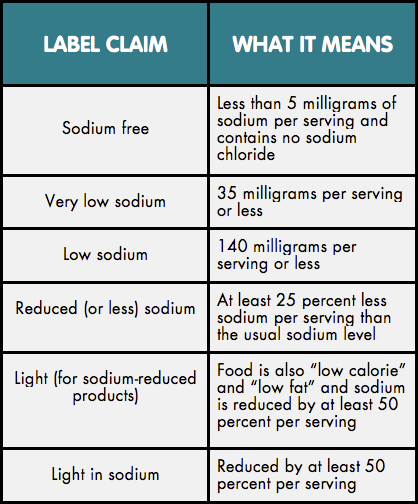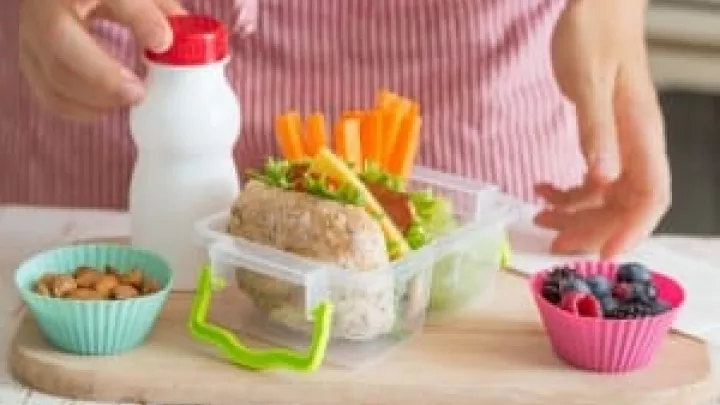
Staying Smart About Sodium
Sodium is a mineral—an essential nutrient that is commonly found in many foods. It is used by the body to control blood pressure, blood volume, and muscle and nerve function. Maintaining an appropriate sodium balance not only benefits heart health, but also bone, brain, stomach and kidney health. Needless to say, having sodium in the diet is vital to the well-being of many bodily organs and functions.
Proceed with caution regarding sodium intake, though, having too much can lead to high blood pressure, which is a major risk factor for heart disease and stroke. Scientific research has shown that reducing sodium intake does lower blood pressure in children and adults. However, achieving a proper amount within recommended limits can sometimes be difficult, as it can be hidden in many sources.Fortunately, sodium does not have to be scary—we just need to be savvy about it!
What are the recommendations?
The Dietary Guidelines for Americans recommends that children eat less than 2,300 mg per day. (This applies to adults, too!)
How much does 2,300 mg look like?
Approximately 1 teaspoon salt = 2,300 mg sodium.
Where is most sodium found?
It is most commonly recognized as table salt. However, the salt shaker is not the biggest contributor to our sodium consumption. Interestingly, about 75 percent of the sodium we eat is in processed foods and restaurant or fast foods. These 10 common food types consumed by children contribute 43 percent of their daily sodium intake:
- Pizza
- Bread and rolls
- Cold cuts and cured meats
- Sandwiches, like cheeseburgers
- Snacks, such as chips
- Cheese
- Chicken patties
- Nuggets, and tenders
- Pasta mixed dishes, such as spaghetti with sauce
- Mexican mixed dishes, such as burritos and tacos
- Soup
Other less common sources of sodium (in the "ingredients" section of nutrition labels):
- Sodium bicarbonate, also known as baking soda
- “Sodium”(including sodium nitrate, sodium citrate, monosodium glutamate [MSG] and sodium benzoate)
Making sense of the label in processed and packaged foods

Tips to reduce sodium intake
- Compare nutrition labels and select the option with the least sodium.
- For cooking at home, use more naturally low-sodium foods, like fruits and vegetables, or sauces and dips without added salt.
- Use alternatives to salt for flavor and seasoning, including:
- Parsley
- Thyme
- Cayenne pepper
- Fresh garlic or garlic powder
- Lemon juice
- Lemon zest
- Flavored vinegar
- Salt-free herb blends
- Cumin
- Nutmeg
- Cinnamon
- Fresh ground pepper
- Tarragon
- Oregano
- Basil
- Cardamom
- Sunflower seeds
- Onion powder
- Low-sodium soy sauce
- Bay leaf
As you gradually reduce the sodium content in your everyday foods, your children will also develop a lower preference for salty foods over time. By replacing high-sodium and nutrient-deficient foods with healthier foods, children may increase their overall consumption of beneficial nutrients, improving the quality of their diet.


